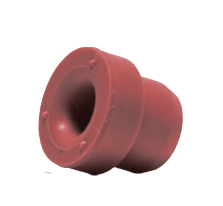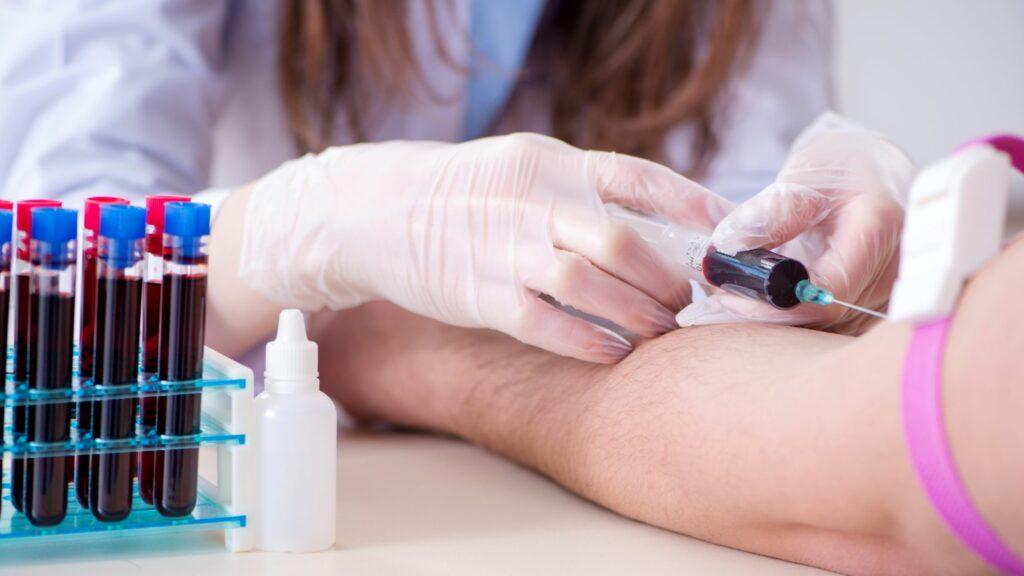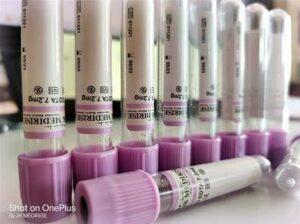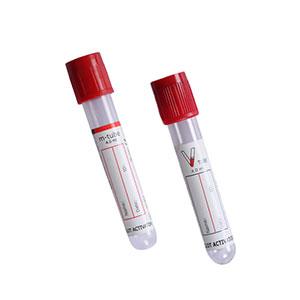Are you a healthcare professional looking to improve your blood collection techniques and results? Look no further than this blog to blood collection tubes! In this article, we’ll cover everything you need to know about the benefits and uses of serum separating tubes, heparin tubes, EDTA tubes, and plain tubes. We’ll also explore the different types of blood collection needles. Additionally, we’ll discuss best practices for handling blood collection tubes, including proper labeling, storage, transport, and disposal.
Obtaining accurate and reliable blood samples for testing requires various techniques and tools, and blood collection tubes are a crucial part of this process. Before we explore the specific details, let’s examine the general purpose of blood collection tubes and their significance as a crucial tool for healthcare practitioners and researchers. These tubes are specially crafted to securely and efficiently collect and preserve blood samples.
What are Blood Collection Tubes?
Blood collection tubes, also known as vacutainers or phlebotomy tubes, are small cylindrical containers utilized for collecting and preserving blood samples for laboratory testing purposes. These tubes are typically made of either plastic or glass and are designed to maintain the quality of the blood sample by preventing clotting or contamination.
Types of Blood Collection Tubes
There are several types of blood collection tubes that serve specific purposes and contain particular additives to help preserve the blood sample. Serum separating tubes, for instance, contain a gel-like substance that separates the serum from the blood cells, facilitating the testing and analysis of specific blood components.
- Serum separating tubes: The tubes are equipped with a gel-like substance that separates the serum from the blood cells, thereby facilitating the examination and analysis of particular blood components.
- Heparin tubes: These tubes are equipped with heparin, which is an anticoagulant that inhibits blood from coagulating. Heparin tubes are typically used for testing plasma samples.
- EDTA tubes: The primary purpose of EDTA tubes is to contain ethylenediaminetetraacetic acid (EDTA), an anticoagulant that effectively prevents blood clotting by binding with calcium ions. EDTA tubes are typically used for testing whole blood samples.
- Plain tubes: These tubes do not contain any additives, and are used for collecting blood samples that do not require any additional preservatives or testing additives. Each type of blood collection tube serves a specific purpose and contains specific additives that help to preserve the integrity of the blood sample. Understanding these differences is critical for ensuring accurate and reliable testing results.
Serum Separating Tubes: Benefits and Uses
Serum separating tubes, also known as SST tubes, are a type of blood collection tube that contain a gel-like substance that separates the serum from the blood cells. By separating the serum from the blood cells, these tubes enable simpler analysis and testing of specific blood components, such as cholesterol levels, glucose levels, and liver function.
SST tubes find extensive use in different medical settings, including laboratories, clinics, and hospitals. Serum separating tubes are especially beneficial for diagnostic testing as they enable the isolation and examination of particular blood components, free from the interference of other blood constituents.
Benefits of using SST tubes for blood collection include
- Improved accuracy and precision in testing results
- Reduced risk of contamination or interference from other blood components
- Faster and more efficient testing processes
- If you’re looking to improve your lab results and ensure accurate testing, using serum separating tubes for blood collection is a great place to start.
Heparin Tubes for Blood Collection: Benefits and Limitations
- Discover Everything You Need to Know About Heparin Tubes for Blood Collection, Including Their Benefits and Limitations
- Heparin tubes are another type of blood collection tube, designed to prevent blood from clotting by inhibiting the action of thrombin and other clotting factors. This makes them ideal for collecting plasma samples for coagulation tests and other assays.
Benefits of using heparin tubes include
- Prevents blood from clotting
- Ideal for coagulation tests and other assays
- Allows for accurate testing of plasma analytes
Limitations of using heparin tubes include
- Limited shelf life
- Interference with some tests, such as electrolyte tests
EDTA Tubes for Blood Collection: Uses, Benefits
The primary purpose of EDTA tubes is to contain ethylenediaminetetraacetic acid (EDTA), an anticoagulant that effectively prevents blood clotting by binding with calcium ions. This makes them ideal for collecting whole blood samples for hematological and molecular biology testing.
Benefits of using EDTA tubes include
- Prevents blood from clotting
- Ideal for hematological and molecular biology testing
- Allows for accurate testing of whole blood analytes
Some common uses of EDTA tubes include
- Complete blood count (CBC)
- Blood typing
- Molecular biology testing
Plain Tubes for Blood Collection: Uses and Advantages
Red-top tubes, which are also called plain tubes, lack any additives or anticoagulants. They are typically used for collecting serum or clotted blood samples for testing.
Benefits of using plain tubes include
- Minimal interference with test results
- Ability to collect serum and clotted blood samples
Some common uses of plain tubes include
- Blood bank donation
- Toxicology tests
- Therapeutic drug monitoring
Best Practices for Blood Collection Tube Handling
- Proper handling of blood collection tubes is crucial to ensuring the integrity of the blood sample and accurate test results. Consider these best practices when handling blood collection tubes
- Ensure that each tube is labeled clearly with the patient’s name, date of birth, and other relevant information, including the type of test being performed and the time of collection.
- Use the correct order of draw when collecting multiple tubes. This helps to prevent contamination of the samples and ensures accurate test results.
- Mix each tube thoroughly after collection to ensure that the anticoagulant or clot activator is evenly distributed.
- Store the tubes upright in a cool, dry place to prevent evaporation and degradation of the sample.
- Transport the tubes to the lab as soon as possible after collection, and handle them carefully to avoid breakage.
- Dispose of used tubes in a designated biohazard container, following all relevant safety protocols.
Blood Collection Tubes from Leading Indian Manufacturers
Blood Collection Tubes
MicroMedica‘s diverse portfolio of vacuum and non-vacuum blood collection tubes provides optimized solutions for every diagnostic need – from routine to specialized testing. Plain tubes facilitate general sampling, while EDTA additives prevent clotting for cellular analysis. Clot activator and silicone-coated tubes promote quick serum separation essential in serological exams. Sodium fluoride additions inhibit glycolysis for accurate glucose measurement, and sodium citrate formulations allow precise coagulation studies. Targeted tube coatings and biochemical inhibitors thus ensure sample integrity across assays. By harnessing formulations that align with specific diagnostic intents, MicroMedica blood collection tubes drive reliability in phlebotomy workflows and laboratory testing.Copy
Retry
LEV-TUBE Single Cap Clot Activator
Levram Lifesciences Pvt. Ltd. produces the LEV-TUBE Single Cap Clot Activator.,India’s leading manufacturer and global supplier of Blood Collection Tubes, is a cutting-edge product designed to optimize clotting efficiency during blood collection. This innovative tube contains silica in fine particle or solution form, specifically formulated to accelerate clotting. By promoting rapid clot formation, healthcare professionals can expect reliable and timely test results.
With a clot response time ranging from 10 to 25 minutes, the LEV-TUBE Single Cap Clot Activator ensures efficient clotting, minimizing processing time and maximizing laboratory productivity. To ensure proper mixing of the clot activator with the blood sample, the collection tube should be inverted 6 – 8 times after blood collection, thereby enhancing clotting effectiveness.
In addition to its clotting capabilities, the LEV-TUBE Single Cap Clot Activator offers efficient centrifugation, with only 5 minutes needed to separate serum or plasma from cellular components. This makes it ideal for a wide range of applications, including the storage of biochemistry samples, immunology tests, and serum determination in biochemistry analysis.
To maintain the integrity and stability of the collected samples, it is recommended to store the LEV-TUBE Single Cap Clot Activator at a temperature range of 4 to 25°C. By following the recommended storage conditions, healthcare professionals can ensure optimal sample preservation and reliable test results.
Vacuum Blood Collection Tube
The Vacuum Blood Collection Tube, developed by JK Medirise, incorporates a new technique that revolutionizes the blood collection process. This advanced tube design allows for direct blood collection into a vacuum tube, eliminating the need for manual aspiration. This innovative feature enhances efficiency, reduces the risk of contamination, and ensures standardized blood collection procedures.
The Vacuum Blood Collection Tube utilizes a very fine micro-needle of non-returnable type, connecting the blood collection holder to the tube. This design ensures that only the required quantity of blood for the desired test is collected, minimizing unnecessary waste and optimizing the accuracy of test results. This user-friendly and precise collection system greatly improves the overall blood collection experience for both healthcare professionals and patients.
Blood Collection Tubes
Blood Collection Tubes, available from reputable manufacturer P. H. Healthcare Pvt. Ltd., are essential devices used in medical procedures worldwide. These tubes are available in both vacuum and non-vacuum types, offering versatility to meet diverse testing requirements.
Non-vacuum blood collection tubes are made of high-quality PP (Polypropylene) plastic, ensuring durability and reliability. These tubes come in various sizes, ranging from 2 ml to 10 ml, catering to different blood volume requirements. They are widely used in clinics, hospitals, and laboratories for efficient blood collection and analysis.
Evacuated (Vacuum) blood collection tubes are made of PET (Polyethylene Terephthalate) plastic, known for its superior strength and compatibility with vacuum technology. These tubes also come in various sizes, offering flexibility in sample volume collection. The evacuated system combines the benefits of vacuum technology with patient and staff safety, ensuring accurate and contamination-free blood collection.
Medzell: Promoting Indian Medical Devices in Emerging Markets
If you’re looking for innovative medical devices to use in your blood collection procedures, you may be interested in checking out Medzell. This B2B platform is focused on promoting Indian medical devices in emerging markets, and offers a wide range of products at competitive prices.
Some of the blood collection devices available on Medzell include.
- Blood collection tubes and needles
- Blood lancets and lancing devices
- Hematology analyzers
- Coagulation analyzers
- Blood gas analyzers
In addition to offering high-quality products, Medzell also provides valuable resources and support for healthcare providers, including training and education programs, technical support, and customer service. Whether you’re looking to improve your blood collection procedures or upgrade your lab equipment, Medzell is a great resource to consider.
Conclusion
In conclusion, blood collection tubes are essential tools in the field of healthcare, allowing doctors and medical professionals to collect and analyze blood samples to diagnose diseases and conditions.Accurate and reliable results of laboratory testing heavily rely on choosing the right blood collection tube.
To achieve accurate and reliable results, it is essential to choose the right blood collection tube for the intended purpose. With various types of tubes available, each specifically designed for specific purposes, selecting the appropriate one is crucial.
Serum separating tubes, heparin tubes, EDTA tubes, and plain tubes all have their unique benefits and limitations, making them ideal for specific types of tests. Venipuncture techniques are critical to successful blood collection, and understanding the correct order of draw is essential to prevent sample contamination.
Lastly, handling blood collection tubes correctly is crucial to maintaining the integrity of the blood sample, including proper labeling, storage, transport, and disposal.
By following proper procedures and being knowledgeable about blood collection tubes, healthcare professionals can ensure optimal functionality and accurate results from the tubes, improving patient outcomes





